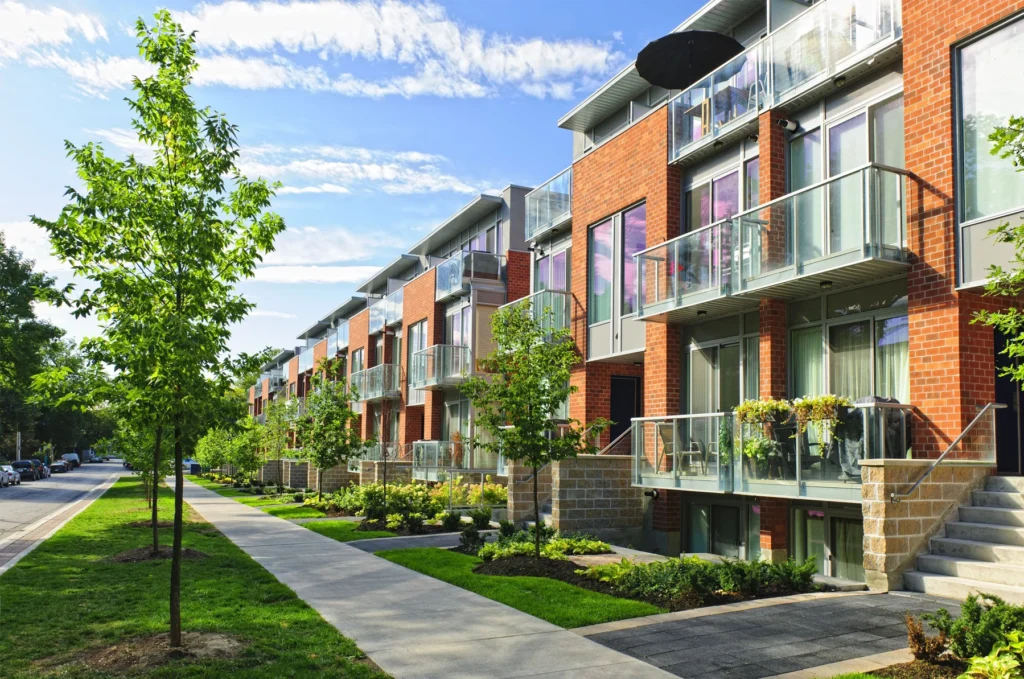While rising home prices are troubling new home buyers, affordability is also a big concern for renters across the nation who have limited housing options — despite earning decent incomes.
The National Multifamily Housing Council and National Apartment Association’s Vision 2030 report suggests the nation needs 4.6 million new rental units by 2030 or will face a serious shortage, as the demand for apartments is at an all-time high with the number of renters reaching an unprecedented level. In fact, almost one in eight people in the United States call an apartment home.
The pricing of multifamily housing falls into three segments:
Affordable housing, which is reserved for individuals or families earning 30–60 percent of area median income (AMI). This segment also includes federally subsidized Section 8 units.
Workforce housing, which is priced for individuals or families earning 60–120 percent AMI.
Market-rate housing and class “A” luxury apartments.
The middle segment, workforce housing, is a huge opportunity for today’s developers. The majority of such developments are simple and have few amenities, but they provide a lower-cost and higher-quality home than any alternative on the market.
In this blog, we’ll explore the current housing crisis and explain the role of developers in workforce housing projects as a possible solution to the nationwide shortage.
What’s the difference between affordable and workforce housing?
As stated above, households that would fall into the workforce housing bucket are understood to have earned income that is insufficient to secure quality housing in reasonable proximity to the workplace.
Therefore, these individuals would not necessarily qualify for affordable housing but would have a hard time paying market-rate rent. Workforce housing allows people who work in a neighborhood to live nearby when they’d typically be either priced out by luxury apartment units or wouldn’t qualify for traditional Section 8 units. Workforce housing developments reduce barriers to being successful at work and increase employee retention.
On the flip side, affordable housing is reserved for individuals or families earning 30–60% of AMI. The median income for all cities across the country is defined each year by U.S. Department of Housing and Urban Development. The 2019 AMI for the New York City region is $96,100 for a three-person family (100% AMI). A family of three in New York City earning $57,660 or less (60% AMI) a year would be considered low-income and qualify for affordable housing options.
And currently, a single minimum-wage worker can’t afford a two-bedroom apartment anywhere in the U.S., according to a 2018 report from the National Low Income Housing Coalition (NLIHC). The cost of rent is a major contributing factor towards individuals living within their means and therefore being successful at work, building relationships with friends and family, being active in their community and more.
Housing costs have steadily increased along with growing demand for rental housing in the decade since the Great Recession. At the same time, new rental construction has tilted toward the luxury market because of increasingly high development costs, according to a Chicago Tribune article about the report. The number of apartments and homes renting for $2,000 or more per month nearly doubled in a decade, between 2005 and 2015.
Is there a housing crisis?
The United States is in the middle of an affordable and workforce housing crisis. Due to increased demand and stunted millennial home ownership, rental markets in major cities don’t question whether rent is rising — but by how much.
Reporting by Curbed explains that the crisis is the logical result of economic forces and a failure to build enough low-cost housing: “If you’ve spent any time in the last few years searching for an apartment in the United States, you’ve likely come to the conclusion that current prices are, in a word, unprecedented.” Even some two-income households with people working full time and earning competitive wages, such as teachers and social workers, are struggling to afford a simple apartment.
As part of their 2019 “Out Of Reach” study, the NLIHC developed an interactive map that shows how much an individual would need to earn to afford a modest apartment in their state. Hawaii ranks the highest for required housing wage, requiring a $36.82 an hour wage to afford a two-bedroom rental home. That equates to 146 hours of work a week needed at the federal minimum wage to afford a two-bedroom rental home.
According to the report, some of the most costly areas are:
California: $34.69/hour, 116 hours/week
Washington, D.C.: $32.02/hour, 91 hours/week
Massachusetts: $33.81/hour, 113 hours/week
New York: $30.76/hour, 111 hours/week
On the other end of the spectrum, Puerto Rico ranks 52nd in terms of affordability, requiring a $9.59 an hour wage to afford a two-bedroom rental. That equals 53 hours of work a week needed at minimum wage to affordable a two-bedroom rental home — much lower than a place like Hawaii, but still out of reach.
More affordable areas include:
Arkansas: $14.26/hour, 62 hours/week
West Virginia: $14.27/hour, 65 hours/week
Mississippi: $14.43/hour, 80 hours/week
Kentucky: $14.84/hour, 94 hours/week
This is why the role of developers in terms of building and preserving workforce housing options for working low- and middle-class income individuals is important, particularly in costly states and metropolitan cities with sky-high rents.
How are workforce housing projects the solution?
One example of the workforce housing model working is in Rochester, Minnesota, where we secured financing for a nearly $20 million mixed-income workforce housing community known as Technology Park Apartments. Merchants Capital secured the loan through the first-ever Freddie Mac Non-LIHTC Forward Commitment on behalf of Real Estate Equities.
The apartments were financed through a 10-year Freddie Mac Non-LIHTC Forward Commitment loan where the interest rate was locked at the closing of the Merchants Bank of Indiana construction loan. The key to this financing is that it is a great way to take interest rate risk off the table in return for offering more affordable rents, and the loan can be used by for-profit and non-profit organizations. Historically, borrowers were only issued forward commitments for projects with new LIHTC equity, so this product is attractive to borrowers that are not looking to cash out at conversion and want to lock their permanent loan rate up-front at construction loan closing.
“We are very excited to be on the forefront of developing a modern workforce housing product that is not heavily reliant on government funding sources,” said Alexander Bisanz, director of acquisitions at Real Estate Equities, said in a Post Bulletin story about the financing partnership with Merchants Capital.
The crisis is clear and in front of us. Merchants Capital is proud to have the opportunity to address this problem head on with our partners, therefore assisting in the development of workforce housing communities to close the gap. We recognize more workforce housing developments, and innovation within those developments in terms of financing and other offerings, is the solution to the nation’s multifamily housing crisis.
Are you ready to finance a workforce housing project? Contact a Merchants Capital originator at originations@merchantscapital.com today.
Read More



